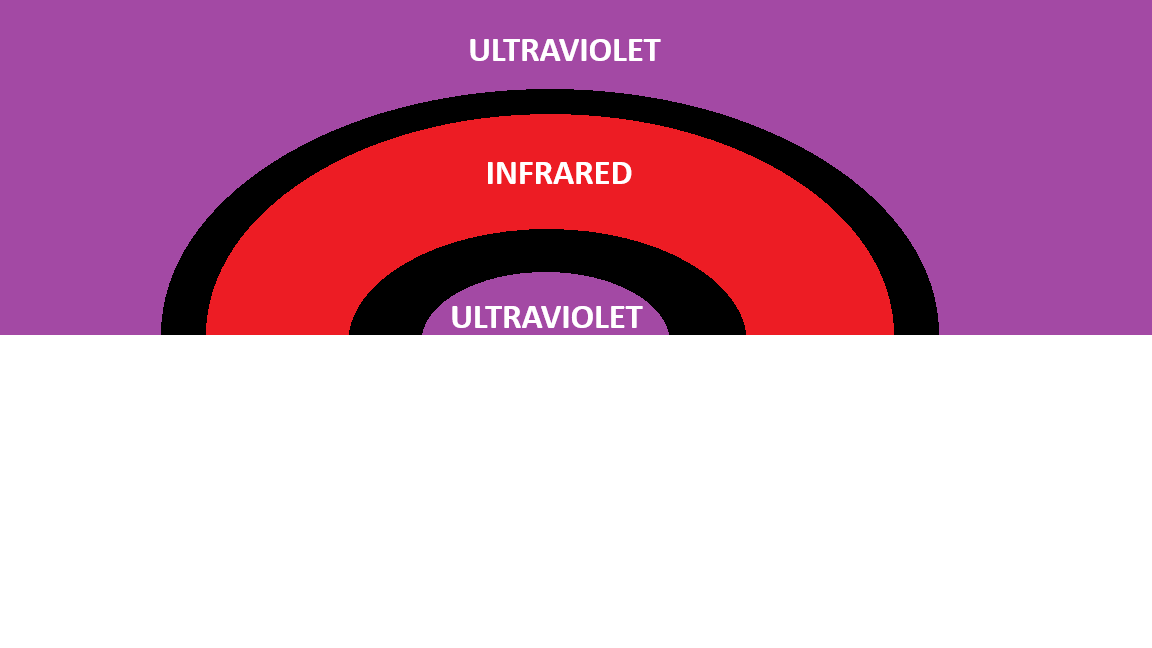If you could actually see every part of the EM spectrum from a rainbow, would the circle be completely filled in? and would it also extend further outwards from the visible spectrum?
1 Answer
Yes, rainbows do have IR and UV bands, but there are 2 possible theories how they might be seen if we could view the invisible EM spectrum.
- UV bands of rainbows: Due to their low wavelength, in accordance with Rayleigh's Law of Scattering, they would be highly scattered, to an extent where their effects are negligible.
If you could see the invisible spectrum, theoretically you may be able to see a filled in circle in the centre of the rainbow. But practically, its likely that you would still see a ring of violet (only thicker), because most of the UV rays would be so scattered that they would barely show in the rainbow
- IR bands of rainbows: The IR bands too would be visible, but practically, they would appear as only a thickened red band, because we would only be able to view a bit of the infrared spectrum. Most of the IR spectrum would be absorbed by atmospheric molecules.
Another important point is that we might not be able to see the rainbow altogether if we could view the invisible spectrum. With all the background radiations (radio waves from radio stations, UV rays from the sun, IR radiation from the sun, etc.) these more prominent radiations may mask the rainbow completely, because of their abundance in our surroundings.
If we could see the rainbow though, it would look like something as shown below. Because of 2 TIRs occuring in the sky, the primary and secondary rainbows would have UV bands to infinity on either side, with a central IR portion.
Here the black bands indicate the rainbows which we see the in the visible spectrum. The inner band is the primary rainbow, in the ROYGBIV order (from up to down). The outer band is the secondary rainbow, in the reversed order, as VIBGYOR.

